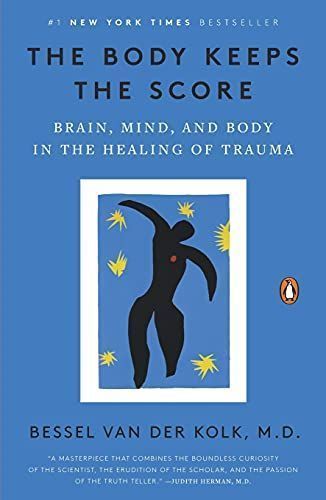
The Body Keeps the Score Mind, Brain and Body in the Transformation of Trauma
The effects of trauma can be devastating for sufferers, their families and future generations. Here one of the world's experts on traumatic stress offers a bold new paradigm for treatment, moving away from standard talking and drug therapies and towards an alternative approach that heals mind, brain and body. 'Van der Kolk draws on thirty years of experience to argue powerfully that trauma is one of the West's most urgent public health issues ... Packed with science and human stories' New Scientist 'Breathtaking in its scope and breadth, a seminal work by one of the preeminent pioneers in trauma research and treatment' Peter A. Levine, author of In An Unspoken Voice 'Dr. van der Kolk's masterpiece combines the boundless curiosity of the scientist, the erudition of the scholar, and the passion of the truth teller' Judith Herman, author of Trauma and Recovery
Reviews
Nicole Elora@nicoleelora
Ash@reverent-reader
hannie@fin
Keila Rico @keilaa
py@gojoscutegf
Gelaine Trinidad@gelaine
🏹@kenzia
Kevin Juneos Mei Le@kvnjmle
Anisah Osman Britton@anisahob
Nina @ninstrees
ahmed@ahmd
Erin Darlyn@erindarlyn
Mia Caven@miacaven
Kay so Queso@kisoh
Sarah Schumacher@smschumacher
Faith Ho @faithho
Louise @readingwithlouise
Keven Wang@kevenwang
Nawel@nawgual
Arjun@arjun
Jessica@jay_gp
lily@lilycrocs
Azalea Wolong @azaleawaffle
Quentin Gibeau@xmas_gonna
Highlights
Storm@stormtaleese
Page 23
Storm@stormtaleese
Page 22
Storm@stormtaleese
Page 18
Storm@stormtaleese
Page 3
🏹@kenzia
Page 72
🏹@kenzia
Page 72
Valeria @valcalvo
Page 11
La’Guyia@vnillasesameoil
Page 31
La’Guyia@vnillasesameoil
Page 27
Kay so Queso@kisoh
Page 356
Kay so Queso@kisoh
Page 324
Kay so Queso@kisoh
Page 311
Kay so Queso@kisoh
Page 279
Kay so Queso@kisoh
Page 276
Kay so Queso@kisoh
Page 226
Kay so Queso@kisoh
Page 221
Kay so Queso@kisoh
Page 215
Kay so Queso@kisoh
Page 209
Kay so Queso@kisoh
Page 188
Dana Mayeli Rangel Torres@danamayeli
Kay so Queso@kisoh
Page 139
Kay so Queso@kisoh
Page 130
Kay so Queso@kisoh
Page 107
Kay so Queso@kisoh
Page 99